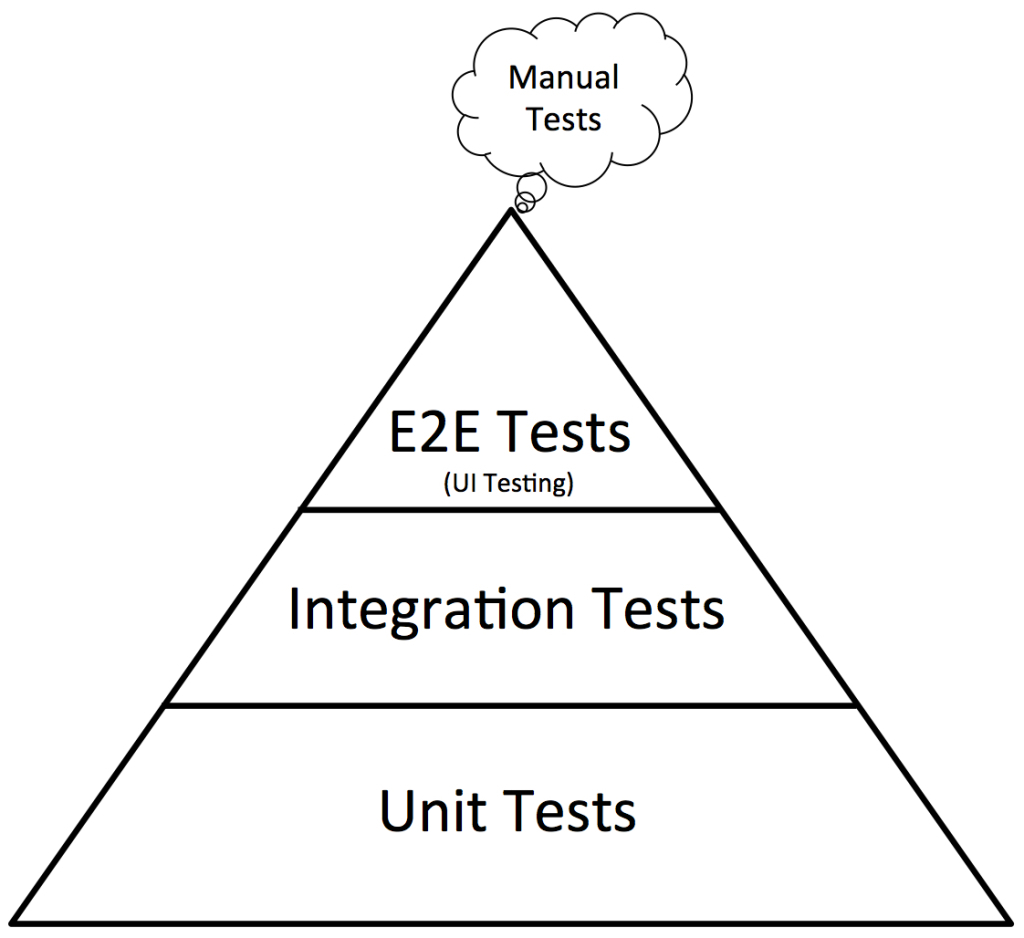JavaScript Unit Testing the Practical Guide
incomplete
Section 1 Getting Started
Slides
What is testing?
verify "if something works as intended"
Types of testing:
Manual Testing
physically testing the code by hand (i.e. write some code, spin up the site and see if it works)
tedious & cumbersome
error prone
often incomplete (not all scenarios covered)
Automated Testing
write some code to test the code you wrote for the feature/site you are working on
initial effort (write tests), no effort thereafter
predictable & consistent
high/complete code & scenario coverage can be achieved
Unit Testing: What & Why?
What:
Why:
avoids endless amounts of manual testing
allows you to cover (close to) 100% of your code & scenarios
code changes are tested against all scenarios (almost) instantly
write cleaner & better code (because testing then becomes easier)
Unit, Integration & End-to-End (E2E) Testing
Unit Testing | Integration Testing | End-to-End (E2E) Testing |
|---|---|---|
Test the individual building blocks of an application | Test the combination of building blocks | Test entire flows and application features |
Every building block (unit) is tested standalone | Verify if building blocks (units) work together | Test the actual "things" real users would do |
If all building blocks work, the overall app works | Even if all units work standalone, the combination could fail | Real users use your app and its features, not individual units |
You should combine all kinds of tests.
Unit Testing | Integration Testing | End-to-End (E2E) Testing |
|---|---|---|
Quickly spot and pinpoint breaking changes & errors | Test (parts of) processes & combinations of units | Test realistic user flows & behaviors |
Ignore actual user flows and interferences | Spotting the exact root of an error can be tricky | Covering all possible behaviors can be challenging |
Test-Driven Development (TDD)
A framework/philosophy for writing tests
Section 2 Setup and Testing Software
Slides
Which Tools Are Needed for Testing?
Application Setup & Code
Generally independent setup
All you need for manual testing
Testing setup can (and typically will) be integrated
e.g. based on Webpack, Vite, etc...
Automated Tests
Test Runner
Runs your tests (i.e., the testing code)
Automatically detects testing code
Display results
e.g. Jest, Karma, Mocha, Jasmine, etc...
Assertion Library
Used to define expected outcomes
Checks whether expectations are met
Supports all kinds of expectations and modes (sync/async)
e.g. Jest, Chai, Expect, Sinon, etc...
Section 3 Testing Basics
slides
AAA - Arrange, Act, Assert
A | Arrange | Define the testing environment & values |
A | Act | Run the actual code/function that should be tested |
A | Assert | Evaluate the produced value/results and compare it to the expected value/result |
Writing good tests is an integrative process
Section 4 Writing Good Tests
slides
What To Test & What Not To Test
should only test your code
don't test any third party code
don't test what you can't change
Only Test Your Code
e.g. fetch() API
Don't test if it works as intended
Don't test your server-side code implicitly via your client side code
Write separate tests for your backend code instead
Do test your client-side reaction to different responses & errors
Writing Good Tests
AAA - Arrange - Act - Assert
1 - Only test one thing
Focus on the essence of a test when arranging
Keep your number of assertions ("expects") low
Only Test One Thing
What is "one thing"?
One feature
e.g. validate input or transform it
Section 5 Integration Tests
Section 6 Advanced Testing Concepts
Section 7 Mocking and Spies Dealing with Side Effects
slides
Spies & Mocks
Spies:
"Wrappers" around functions or empty replacements for functions that allow you to track if & how a funciton was called
Mocks:
A replacement for an API that may provide some test specific behavior instead
Objects re-programmed with expectations which form a specification of the calls they are expected to receive
Dummy:
objects that are passed around, never actually used
usually just used to fill parameter lists
Fake:
objects that have working implementations but usually take some short cut which makes them not suitable for production
e.g. in memory database
Stubs:
provide canned answers to calls made during tests
usually not responding to anything outside what's programmed for the test
may also record information about calls
e.g. email gateway stub that remembers the message it 'sent' or maybe only how many messages it 'sent'
Section 8 More on Mocking and Diving Deeper
Section 9 Testing and The DOM
slides
